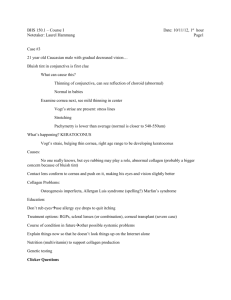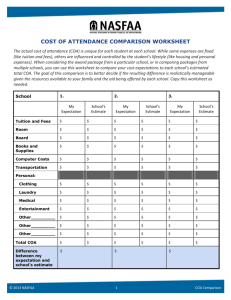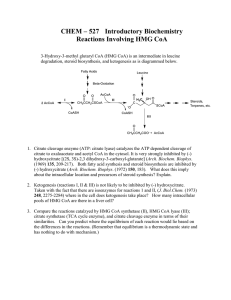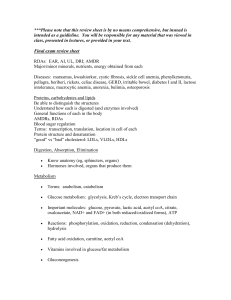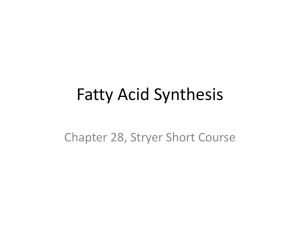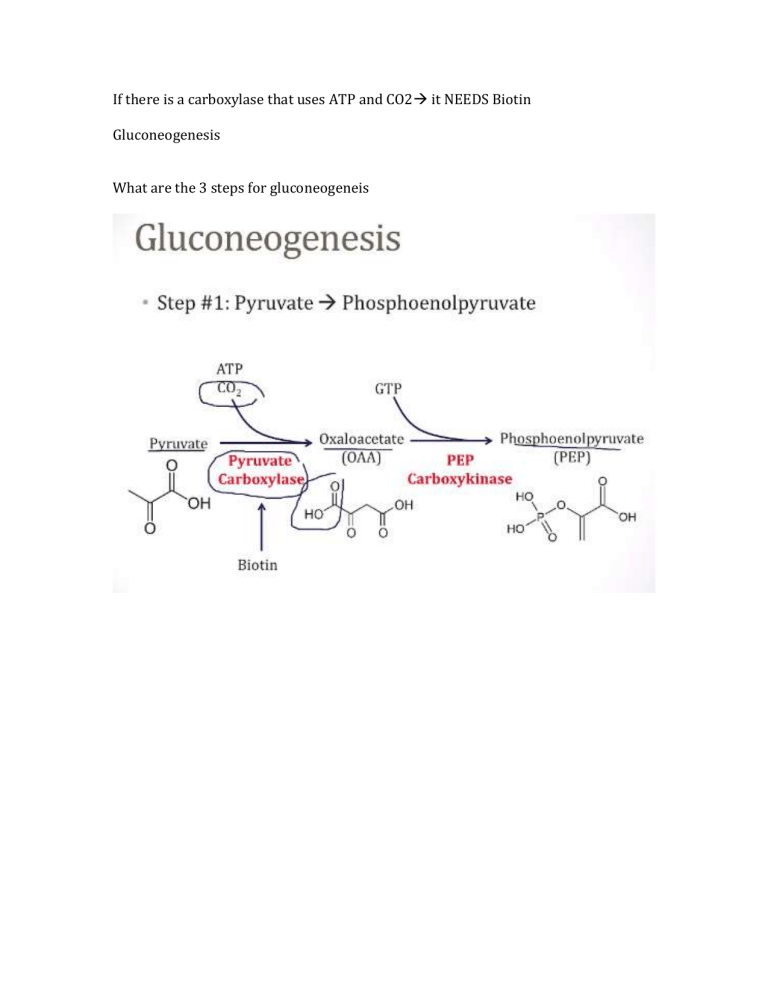
If there is a carboxylase that uses ATP and CO2 it NEEDS Biotin Gluconeogenesis What are the 3 steps for gluconeogeneis Rate limiting step for glycolysis PFK-1 Rate Limiting for Gluconeogenesis F1,6 bisphosphatase-1 Activated by ATP has a lot of energy, so you don’t need the TCA cycle Rxn F-6-P F1,6,P F2,6bP ↑ ↑ ↑ when eating ↑ ↑ glycolysis Glucose 6 Phosphatase is found in the (Organs) Liver and Kids Cellular Location? (weird) RXN: G6P GLUCOSE Other Organs G6P Glycogen EVEN chain FA CAN become glucose. TAG breakdown Glycerol Dihydroxyacetone PhosphateGlycolysis/Gluconeo Cortisol/steroids: ↑ ↑ [Enzymes for Gluconeogenesis] ↑↑[Glucose] Diabetes Thyroid Hormone: ↑ ↑ Gluconeogenesis Fatty Acids Triglyceride ==TAG Lipid Metabolism: Intestines Lipids Free FA FA TAG (in enterocyees) TAG goes in Chylomicrons in blood TAG Free FA (In Adipocyees and muscles ) by Lipoprotein lipase SAT vs UNSAT fats SAT: more saturated SOLID UNSAT o Cis fat o Trans fat (Unnatural) o Omega 3 Fa (3 carbons from the tail of the fat FA SYNThesis 1. Liver 2. Adipose After a MEAL ↑ ↑ [ATP] & [Acetyl-CoA] ATP--| Isocitrate Dehydrogenase (TCA) resulting in ↑ ↑ CITRATE (Citrate Shuttle) Acetyl-CoA CANNOT exit the mitochondria but CITRATE CAN Step2: (In Cytosol) Citrate Acetyl-CoA (ATP-Citrate Lyase) STEP 3 (RATE LIMITING) Acetyl CoA Malonyl CoA (Acetyl CoA Carboxylase) SUPER IMPORTANT Rxn Uses CO2 and BIOTIN Product of FA Synthesis (Malonyl CoA) INHIBITS [B-OX] BIOTIN Pry Carboxylase Acetyl-CoA Carboxylase STEP 4 FA Synthase makes MALMITATE (16C) FA from Acetyl and Malonyl CoA USES NADPH Palmitate Other FA ACTIVATORS 1. Insulin 2. Citrate INHIBITORS 1. Glucagon 2. EPI FA STORAGE 1. Palmitate--_ TAG 2. Adipose Tissue TAG Breakdown (HORMONE SENSITIVE LIPASE): Removes FA from TAG (In Adipocytes) Activated by Glucagon and EPI 1. B-OX (Acetyl CoA) 2. FA transported bound to ALBUMIN in Blood B-OX What 2 organs cannot use FA for energy? RBC (no mitocondrria) & BRAIN B-OX 1. Remove 2 C from a molecule 2. What does it Make??? a. Acetyl Coa, NADH, FADH2 3. STEPS a. 1 FA FA-CoA (LONG Chain FA CoA Syn) i. Use ATP b. 2. Transport FA-CoA Inner Mito (Carnitine Shuttle) i. Carnitine 1. Liver & Kidneys MAKE it from Lysine and Methionine 2. MUSCLES and HEART need it from DIET ii. FA- CoA enters Inner Mito Membrane Space but CANT enrer Matrix iii. FA-CoA Acyl Carnitine (Carnitine Palmitoyl Transferase-1) CAT-1 1. CPT-1 is turned OFF by Malonyl-CoA (↑↑ when we are MAKING FATS) 2. Acyl Carnitine Acetyl-CoA(CPT-2) iv. Carnitine Deficiency CAN’T BREAKDOWN FA 1. Causes a. Malnutriation b. Liver Disease c. Used up (Trauma, burns, pregnancy) d. Dialysis (CKD) Taken out of blood 2. RESULT a. Can’t transport LCFA to mito ↑↑↑[Long FA](in cytosol) 3. Diagnose: a. ↓↓[Carnitine] & Acyl-carnitine 4. S/S a. Muscle Weakness (During Exersize) b. Heart Issues c. Hypoketotic Hypoglycemia when fasting i. No Glucose ii. ↓FA breakdown ↓↓Ketone Synthesis 5. Congenital Disease a. Can’t bring Carnitine INTO cells b. LOW Carnitine c. 3. B-OX i. remove 2 carbons atarting at start of carboxyl group (a carbon, b carbon) 1. Acyl-CoA Dehydrogenase (4 TYPES depending on length of chain) a. MAKES FADH2 b. Medium Chain ii. MCAT deficiency (LOW Acetyl-CoA levels) 1. Mewdium chain Acyl-CoA Dehydrogenase 2. AR disorder 3. Hypoglycemia w/o ketones 4. CANT break down 6-10 FA ↑↑↑[Acyl Carnitine] (diagnostic) 5. Gluconeogenesis Shutdown a. ↓[Acetyl CoA]↓↓Pyr Carboxylase activity b. Worse in Fasting/ iii. ODD CHAIN FA CAN TURN INTO glucose 1. B-OX until 3 carbons 2. Prop-CoA Succ-CoATCA iv. PROPINYL-CoA (IMPORTANT MOLECULE) 1. Amino Acids Prop-CoA 2. CholesterolProp CoA 3. ODD CHAIN FA Prop CoA v. Prop-CoAMethylmalonyl-CoA Succ-CoA 1. 1srt step needs: Biotin 2. 2nd Step Needs: B12 a. B12 Deficiency↑↑[Methylmalonic Acidemia] vi. Methylmalonic Acidemia 1. Causes a. B12 deficiency or b. Deficiency of Methylmalonyl-CoA mutase 2. S/S a. Anion Gap Metabolic Acidosis b. CNS dysfunction c. Fatal as kid In Zellweger syndrome and X-linked adrenoleukodystrophy (XALD), the lack or dysfunction of peroxisomes, respectively, leads to accumulation in the blood of very long-chain FA, causing loss of vision, behavioral disturbances, and death Propinyl-CoA Carboxylase ( d. Needs Biotin 4. B12 deficiency leads to incorporation of Methylmalonyl-CoA instead of malonyl-CoA in lipid synthesis. Misincorporation during formation of myelin sheaths leads to neuropathy! 5. B12 deficiency is seen in: malabsorption (alcohol excess, infections) lack of intrinsic factor (pernicious anemia, gastric bypass) dysfunction of terminal ileum (Crohn’s disease, surgical resection) or veganism 6. i. 7. STEP
